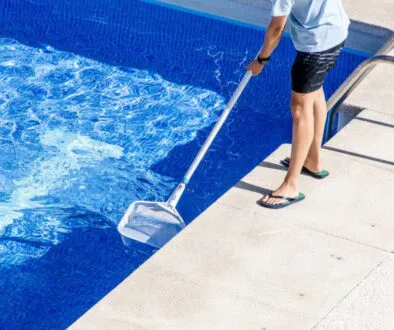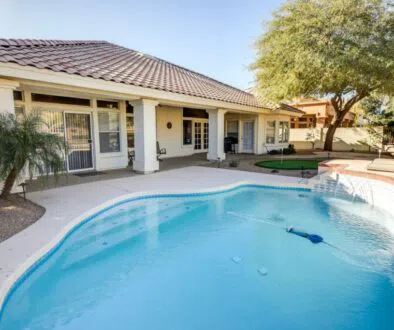What Is Chlorine Lock And How To Break It?

Published Sept. 12, 2024
Swimming pools provide an excellent escape for relaxation and fun, but keeping them in top shape can feel like a struggle. One common challenge for pool owners is chlorine lock—a frustrating issue that can turn your peaceful oasis into a murky mess. How can you tackle this problem and keep your pool a refreshing retreat?
In this article, we’ll explore everything about chlorine lock. We’ll learn its causes, signs, solutions, and prevention methods.
What Is Chlorine Lock?
A chlorine lock in pool occurs when chlorine loses its effectiveness. This prevents proper sanitation of the water. The issue arises when there’s a notable disparity between free and total chlorine levels.
Free chlorine is the active ingredient that sanitizes the pool. Total chlorine includes both free and combined chlorine. Chlorine lock happens when free chlorine levels are low, even if total chlorine readings are high. This leads to inadequate water treatment.
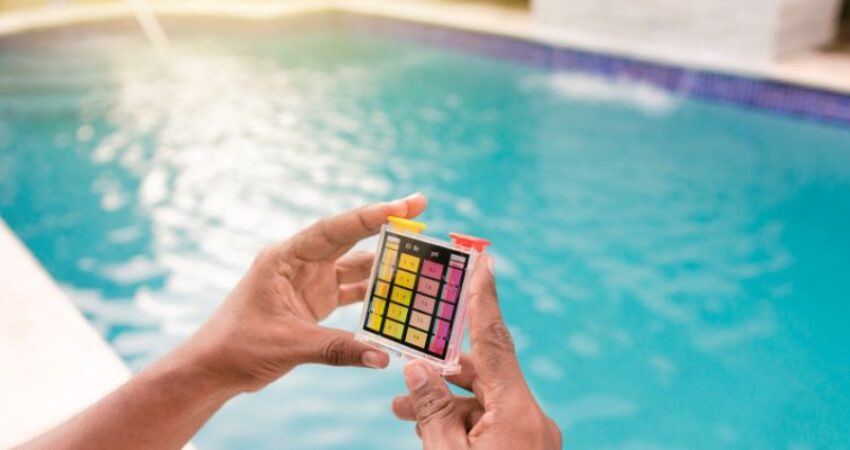
What Causes Chlorine Lock?
Chlorine lock results from several factors. Each factor impacts chlorine’s effectiveness in maintaining water clarity and sanitation:
- Elevated levels of cyanuric acid. Cyanuric acid stabilizes chlorine, shielding it from UV degradation. Keeping the right cyanuric acid level is vital for chlorine effectiveness, but excess can create issues. High cyanuric acid levels bind with chlorine molecules. This reduces chlorine’s sanitizing ability. As a result, chlorine levels can rise without producing clear, safe water.
- High levels of contaminants. Organic materials like sweat, urine, and debris can contaminate the pool. When chlorine reacts with certain substances, it forms chloramines. These reduce sanitation effectiveness, create unpleasant odors, and irritate swimmers. The buildup of chloramines consumes available chlorine. This leads to chlorine lock and leaves less chlorine for adequate water sanitation.
- Improper pool chemical balance. The chemical balance in a pool is crucial. This includes pH levels, alkalinity, and calcium hardness. These factors are vital for the effectiveness of chlorine. If pH levels are too high or low, chlorine’s ability to kill bacteria and break down contaminants is compromised. Regular testing and adjustment of these levels are crucial for optimal chlorine performance. An imbalanced pool can hinder chlorine’s sanitizing ability, leading to chlorine lock.
Understanding these causes helps pool owners take proactive steps. They can maintain chlorine levels and ensure a clean, safe swimming environment.
Signs Of Chlorine Lock
The most noticeable sign of a chlorine lock is a strong odor, which many mistakenly associate with excess chlorine in the water. Chloramines cause this smell. They form when chlorine reacts with organic matter like sweat, urine, and other contaminants.
Chlorine lock has several signs beyond just a bad smell. One is persistent algae growth, which can thrive even with proper chlorination. Another is cloudy water that stays murky despite regular cleaning. These symptoms show chlorine isn’t working effectively, leading to a buildup of unwanted compounds in the water.
Recognizing early warning signs is crucial. It helps you take the necessary steps to restore proper water balance. This ensures a clean and safe swimming environment.
How To Fix Chlorine Lock
If you’re wondering how to break chlorine lock in pool, the task requires strategic intervention to restore proper sanitation. Here are some methods to consider for breaking the chlorine lock in your pool:
Shock The Pool
The best way to resolve chlorine lock is a pool shock with unstabilized chlorine. Breakpoint chlorination involves adding a high dose of chlorine to oxidize contaminants, including chloramines that cause the lock. For the best outcome, follow the manufacturer’s guidelines. Make sure the pool’s pH levels are balanced before the shock treatment.
Partial Draining
If it is due to high cyanuric acid levels, partially draining and refilling the pool can reduce these levels. This method lowers cyanuric acid concentration and refreshes the water, improving overall quality. Regularly monitoring cyanuric acid levels is crucial. High concentrations can reduce the effectiveness of chlorine.
Cyanuric Acid Reducer
Another chlorine lock fix to try is using a cyanuric acid reducer. Recently introduced products can effectively reduce cyanuric acid levels without draining the pool. These reducers chemically bind to cyanuric acid, making it easier to filter. This solution helps pool owners maintain optimal chemical balance while minimizing water loss.
Implement these methods to break chlorine lock. This ensures your pool stays safe and enjoyable for swimming.
How To Prevent Chlorine Lock
Prevention is crucial to avoid a chlorine lock. This issue can affect your pool’s water quality and overall sanitation. Here are some essential steps to consider:
- Consistent monitoring. It’s crucial to check the chlorine and cyanuric acid levels in your pool regularly. Use a reliable test kit to assess these levels at least once weekly and adjust as needed to maintain proper chemical balance. Monitoring these levels helps prevent chlorine lock and ensures a safe and enjoyable swimming environment.
- Use unstabilized chlorine. When cyanuric acid levels are near the upper limit of the recommended range, it’s wise to switch to unstabilized chlorine. This chlorine effectively maintains sanitation. It avoids chlorine lock because it doesn’t add extra stabilizers to the water.
- Consider a saltwater chlorinator. Investing in a saltwater chlorinator can change how you maintain chlorine levels in your pool. This device automates chlorine addition, ensuring consistent water chemistry. It also reduces the risk of imbalances and chloramine buildup, simplifying pool maintenance.
Implementing these strategies helps prevent chlorine lock. This way, you maintain a healthier pool environment.
Frequently Asked Questions About Chlorine Lock
How much liquid chlorine is needed to break a chlorine lock?
To effectively break a chlorine lock, you should add ten times the amount of chlorine relative to the level of chloramines. For instance, if the combined chlorine level is three ppm, aim to achieve a free chlorine level of 30 ppm.
Does chlorine lock resolve on its own?
No, it will not dissipate naturally. Active intervention is required to address the issue.
Can low pH levels contribute to chlorine lock?
Yes, low pH can impair chlorine’s effectiveness, potentially leading to the development of a chlorine lock.
Does chlorine lock result in cloudy water?
A chlorine lock can cause cloudy water due to inadequate sanitation.
Can shocking the pool break a chlorine lock?
Yes, shocking the pool can break a chlorine lock. It does this by oxidizing contaminants and restoring the appropriate chlorine levels. However, following the correct shock treatment procedure is crucial to ensure optimal results.
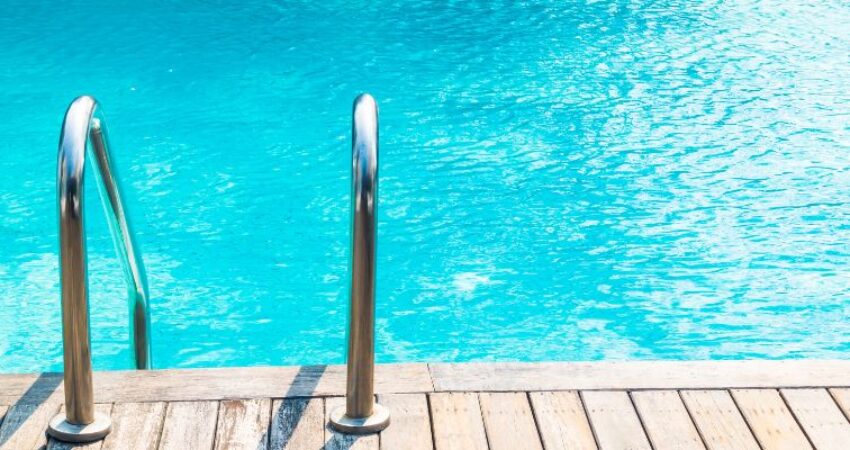
Keep Your Pool Crystal Clear And Safe
Understanding the nuances of chlorine lock is essential for pool maintenance. To maintain a pristine pool environment, identify causes and recognize signs. Implement effective solutions. Regular monitoring and proactive measures will help prevent chlorine lock, ensuring your pool stays an inviting oasis for family and friends. Dive into pool care today and keep your oasis sparkling.
Hire Boca’s Favorite Pool Builders
Excel Pool and Patio Solutions is your trustworthy provider of pool services in Boca Raton. We are experts in pool and patio remodeling and can handle your resurfacing needs as well. Our technicians are vetted and trained for your guaranteed satisfaction. Get to know us by browsing our website or reaching out to us with any questions.
Contact our team today to request a free estimate for pool construction, maintenance, repairs and more.
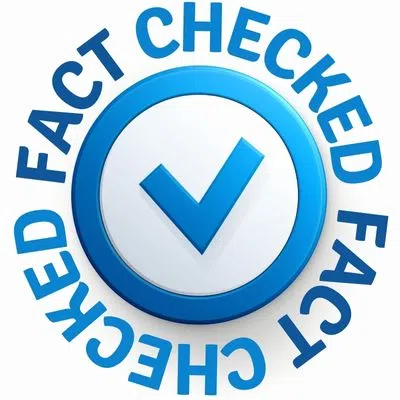
Fact Checked By Experts
This is original content and has been diligently fact checked by our internal team of experts. Discover more about the rigorous editorial standards we uphold for our website here.

About The Author
Hello! I am Corinne, a graduate of Riverside College. My career has evolved into focusing on writing, where I deliver high-quality and meticulously researched content. I have a proven track record of developing helpful articles that engage a wide variety of readers.

